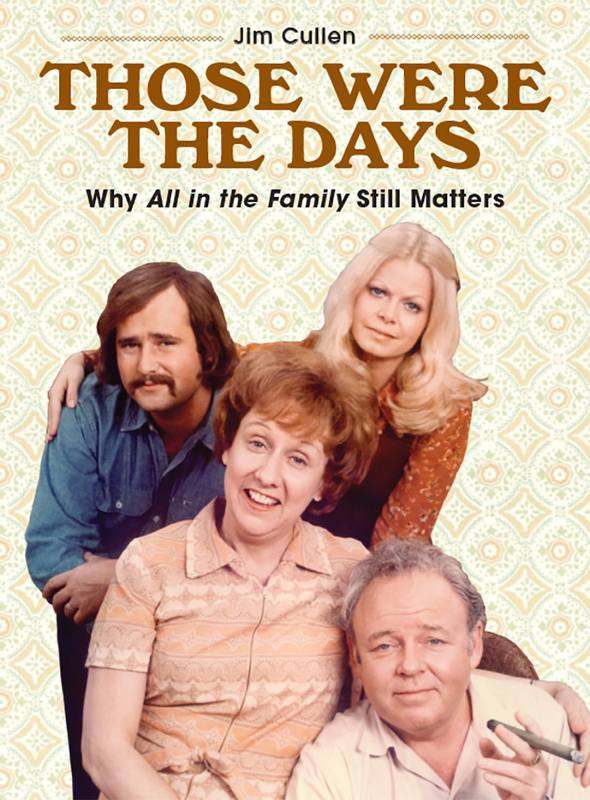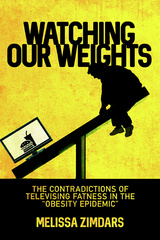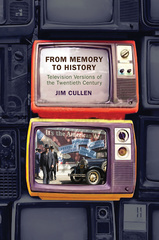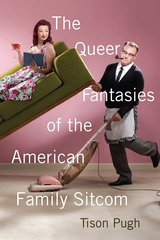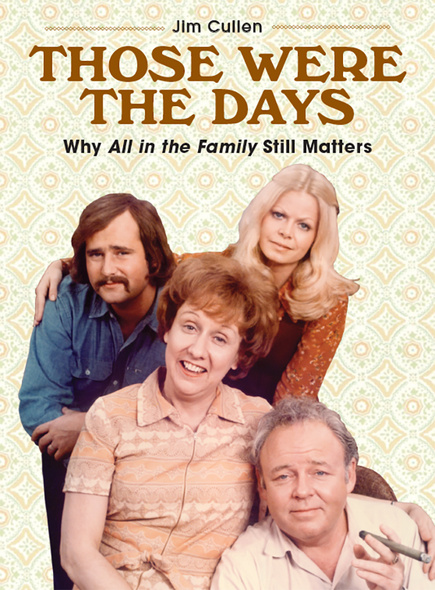
Between 1971 and 1979, All in the Family was more than just a wildly popular television sitcom that routinely drew 50 million viewers weekly. It was also a touchstone of American life, so much so that the living room chairs of the two main characters have spent the last 40 years on display at the Smithsonian. How did a show this controversial and boundary-breaking manage to become so widely beloved?
Those Were the Days is the first full-length study of this remarkable television program. Created by Norman Lear and produced by Bud Yorkin, All in the Family dared to address such taboo topics as rape, abortion, menopause, homosexuality, and racial prejudice in a way that no other sitcom had before. Through a close analysis of the sitcom’s four main characters—boorish bigot Archie Bunker, his devoted wife Edith, their feminist daughter Gloria, and her outspoken liberal husband Mike—Jim Cullen demonstrates how All in the Family was able to bridge the generation gap and appeal to a broad spectrum of American viewers in an age when a network broadcast model of television created a shared national culture.
Locating All in the Family within the larger history of American television, this book shows how it transformed the medium, not only spawning spinoffs like Maude and The Jeffersons, but also helping to inspire programs like Roseanne, Married... with Children, and The Simpsons. And it raises the question: could a show this edgy ever air on broadcast television today?
Little did I know about the world Archie Bunker and All in the Family were born into until I read Jim Cullen’s informed and perceptive Those Were the Days: Why All In The Family Still Matters.
Jim Cullen's beguiling scholarship offers a nimble treatment of what was arguably American television's most influential scripted series, made in the waning days of the now bygone mass audience.
'All in the Family' pushed the envelope on race and gender. Has America regressed since then?' by Jim Cullen
A very accessible and highly readable study that situates All in the Family aptly in its historical moment. It illuminates why the show became a landmark and what makes it so special to this day.
From how each character evolved to the family's resemblance to real-life changes and developing social awareness, Those Were the Days provides a solid study that will serve as discussion material for any media studies or American social history classroom.'
Those were the days: As ‘All in the Family’ turns 50, a look at why it succeeded' by Jim Cullen
Norman Lear deserves his Golden Globe award — does America deserve him?' by Benjamin Lear
Mary Baker Eddy Library podcast: Jean Stapleton and the spiritual dimensions of ‘All in the Family’ episode
Introduction: Broad(cast) Humor
1 Situation Comedy, Situation Tragedy: The Transitional World of All in the Family
2 The Revolution, Televised: Origins of the Family
3 Fuzzy Reception: Meeting the Bunkers
4 Producing Comedy: Making All in the Family
5 The Character of Home: Chez Bunker
6 Not Bad for a Bigot: The Making of Archie Bunker
7 A Really Great Housewife: The Character of Edith Baines Bunker
8 Left In: The Liberal Arts of Michael Stivic
9 “Little Girl” to Mother: The Working-Class Feminism of Gloria Bunker Stivic
10 Family Resemblance: The Rise and Fall of the Lear Television Empire
Conclusion: Just Like Us
Acknowledgments
Index

